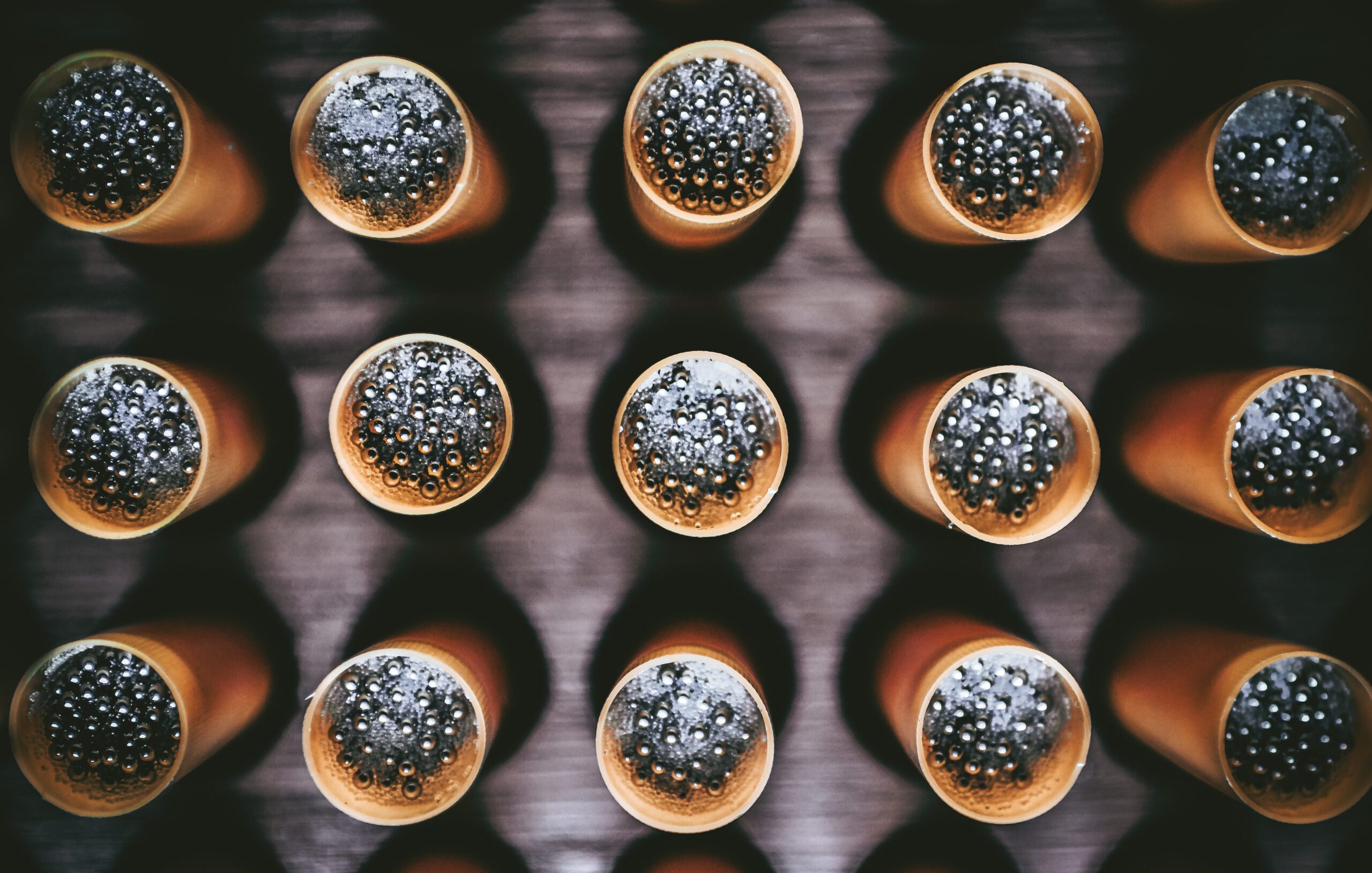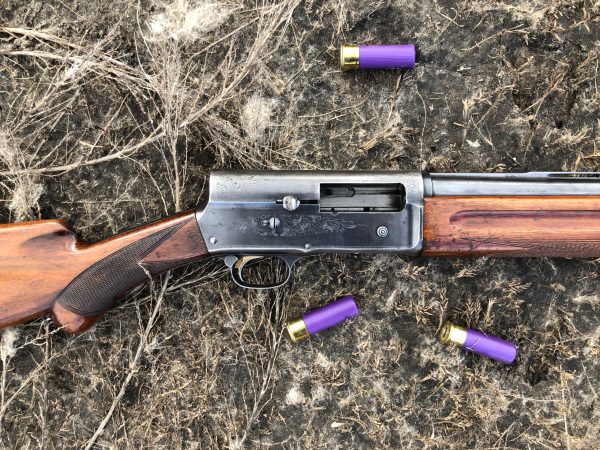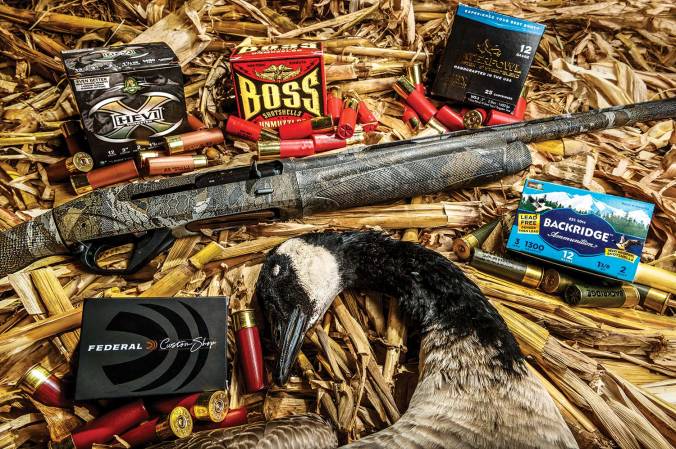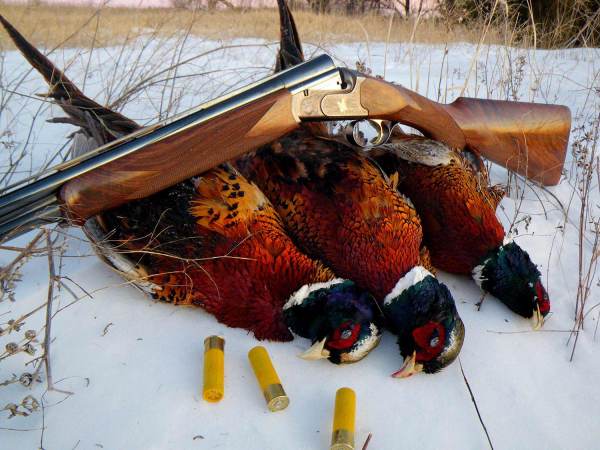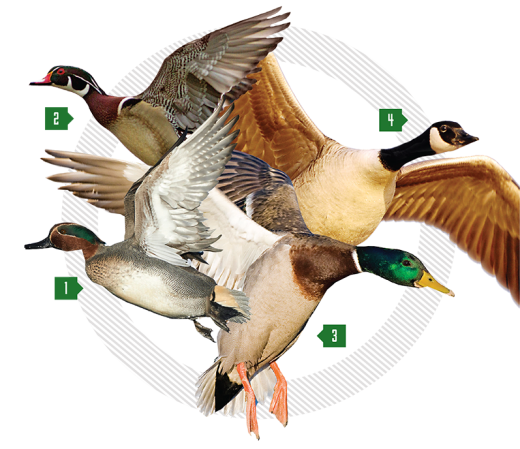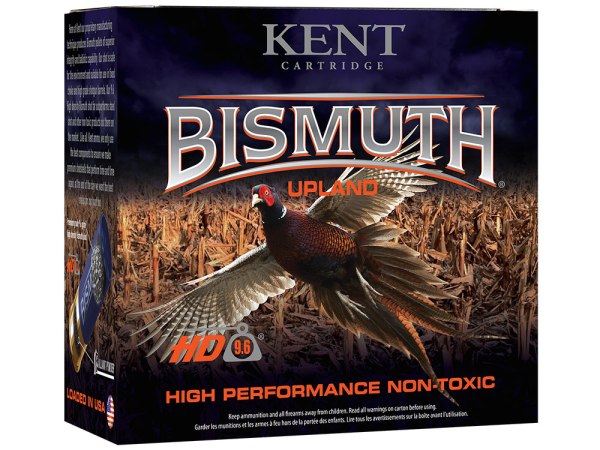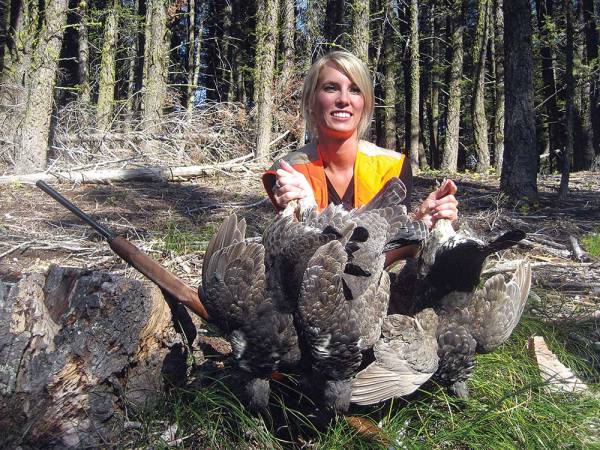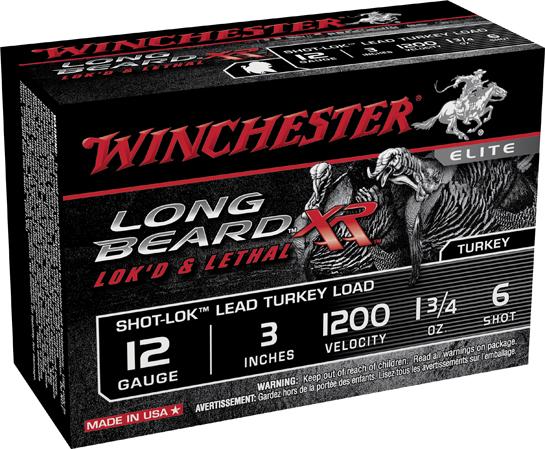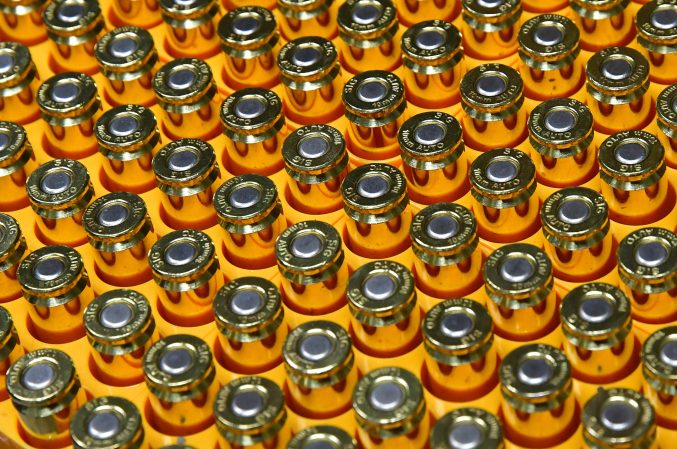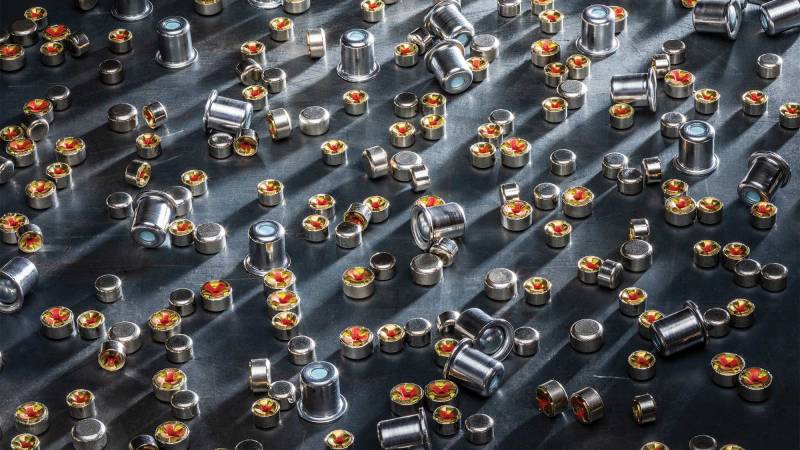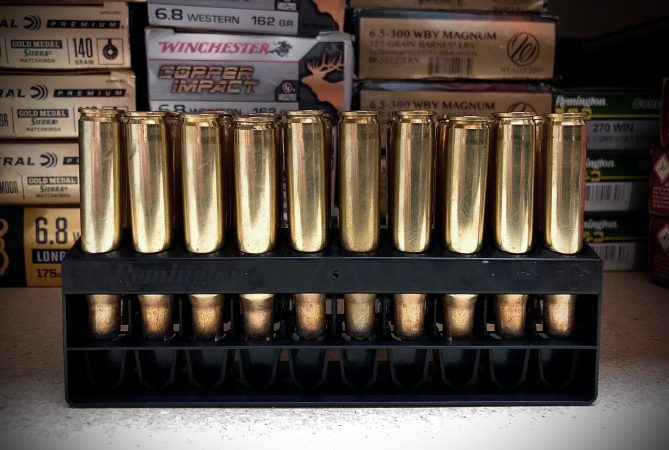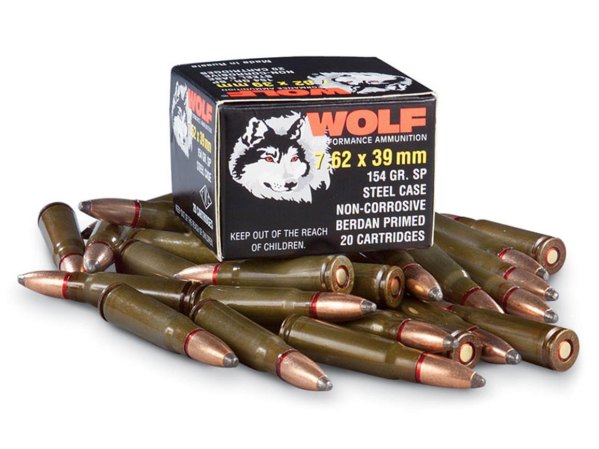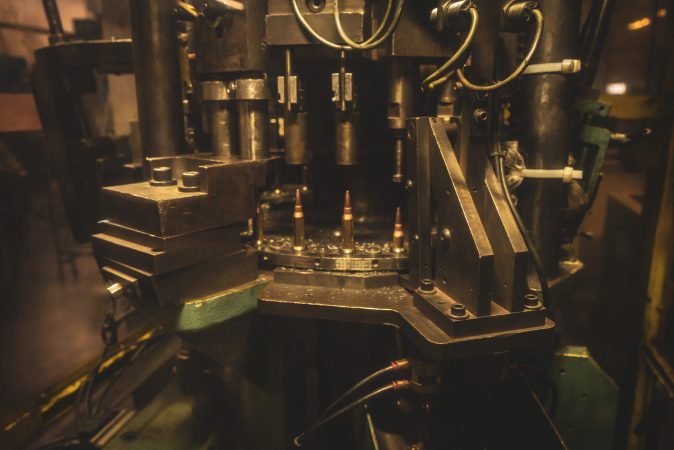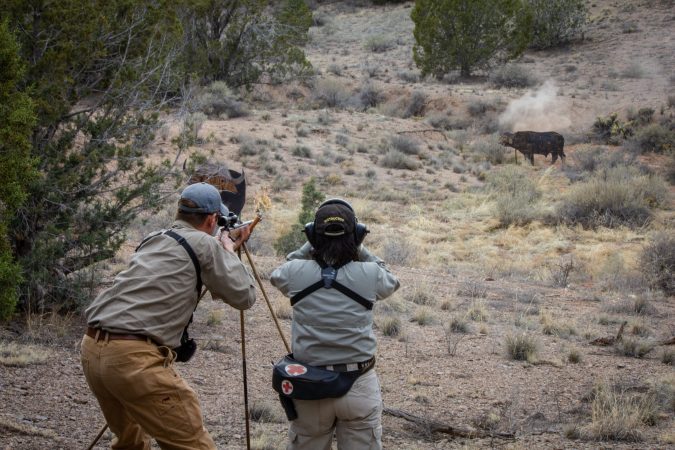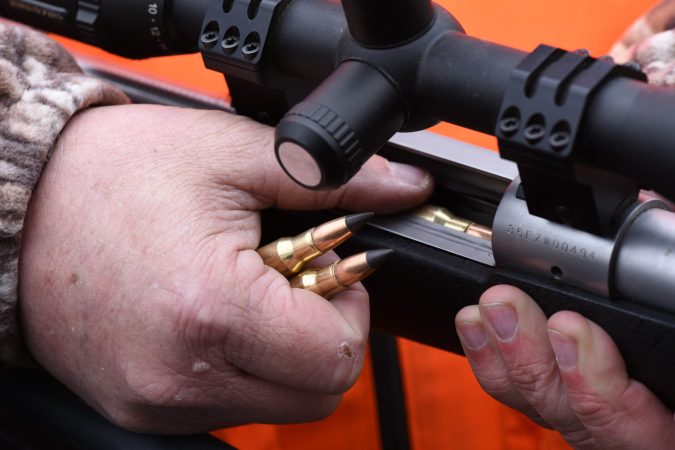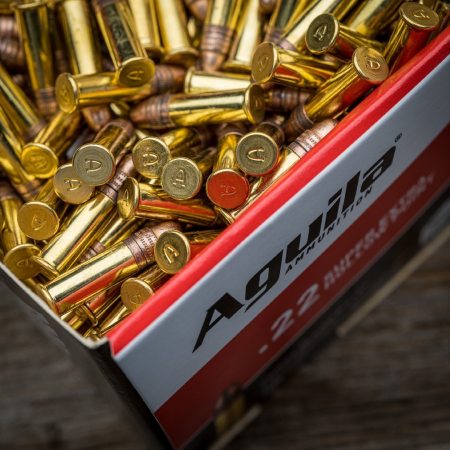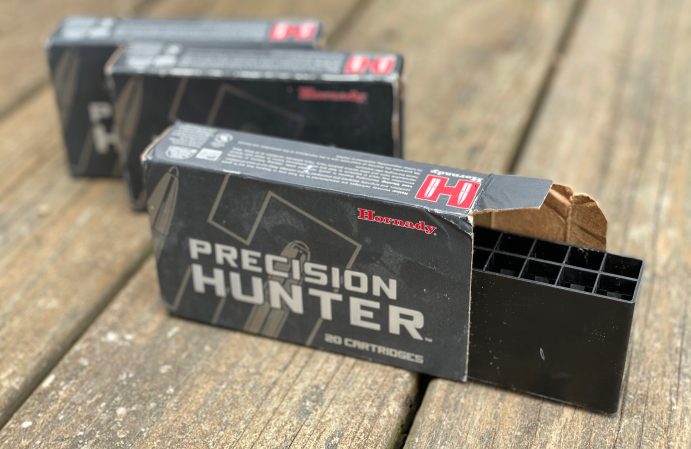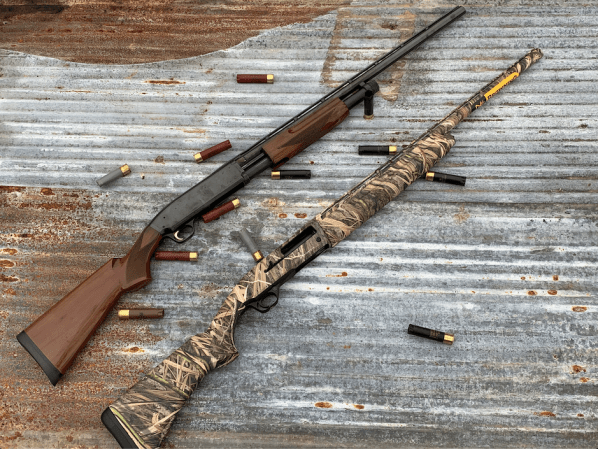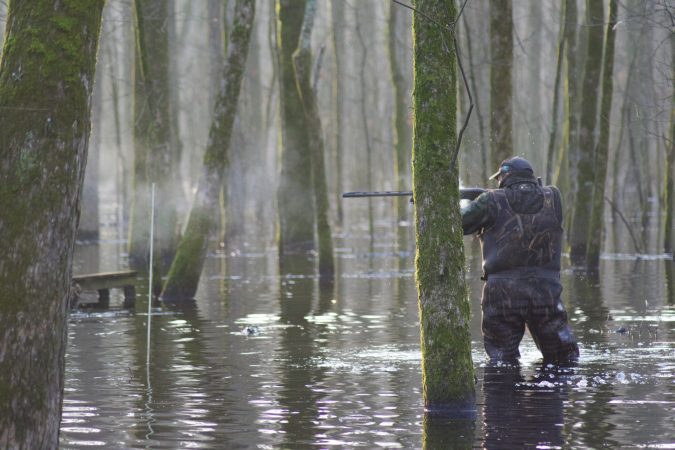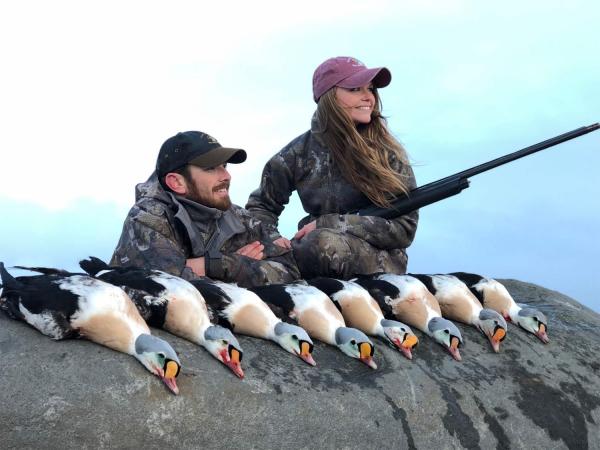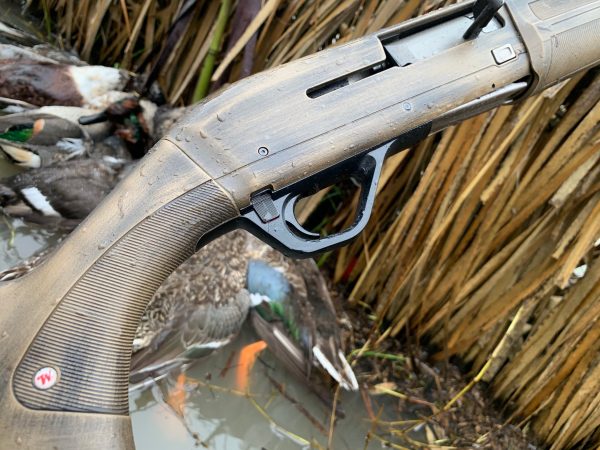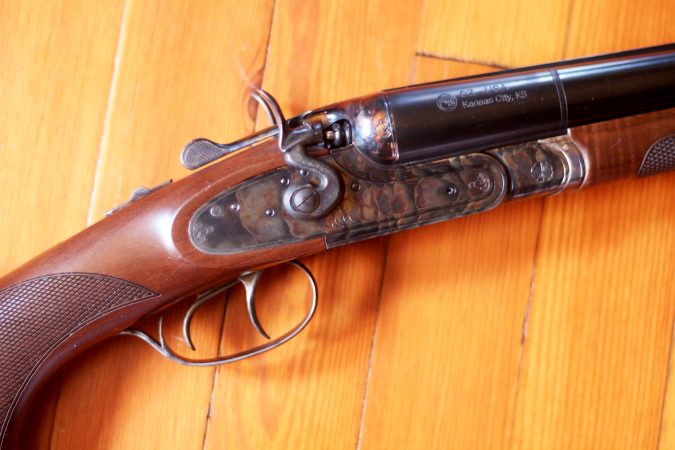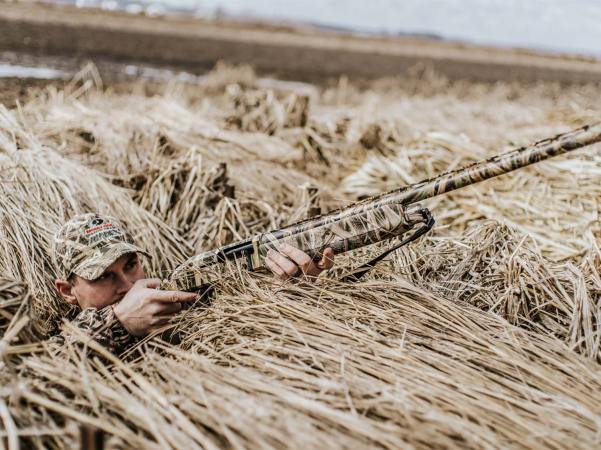We may earn revenue from the products available on this page and participate in affiliate programs. Learn More ›
Editor’s note: Nick Charney is an engineer by trade and a self-taught shotshell maker. He works with Apex Ammunition, helping to build their TSS, steel, and TSS-steel blended loads. This article was compiled by Charney with help and expertise from the shotshell engineers at Apex.
Due to its density — 18.1 g/cc (grams per cubic centimeter) — TSS (tungsten super shot) is an efficient killer of turkeys, waterfowl, upland birds, and predators. The heavy weight of TSS is leveraged to use smaller pellet sizes than lead, bismuth, or steel, delivering denser patterns downrange while increasing penetration and energy at the target. The smaller pellets also reduce wind resistance, which causes all shot to lose velocity, and energy. The result is a pellet that maintains its energy longer without losing its shape (because it’s so hard), creating more consistent patterns and clean kills — assuming shooters hold up their end of the bargain.
Of course, the lethality of TSS comes at a cost. Currently the price per pound of the non-toxic shot is around $45 compared to $36 per pound for Hevi-Shot (12 g/cc), $15 to $20 for bismuth (9.7 g/cc) and $2 for lead (11.34 g/cc) and steel (7.8 g/cc). It’s the most expensive shot ever engineered: you can pay over $10 per shell. But its effectiveness is without equal. And there are steel-TSS stacked loads that are a much more affordable (around $1.40 per shell) way for hunters to shoot tungsten.
The Basic Building Blocks of TSS
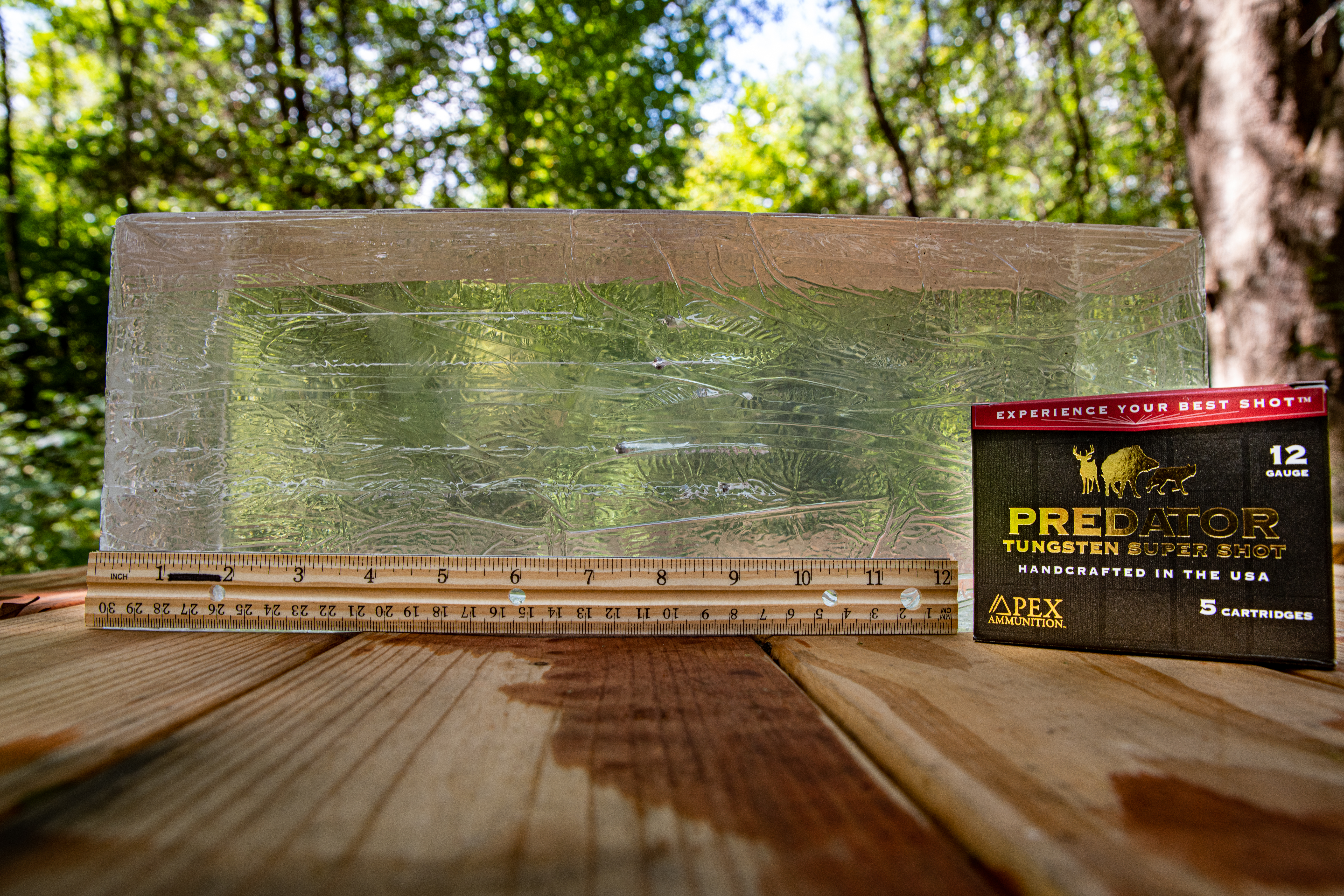
A general rule of TSS load development is to take a lead pellet and reduce the shot size by two to four sizes depending on the quarry. For example, a No. 2 TSS pellet can be an effective predator round as compared to a BB lead load, and No. 9 TSS is a common choice for turkey hunters in lieu of a No. 5 or 6 lead. There are many effective TSS shot sizes for all legal game, but when you begin building a tungsten load, this is the first hurdle to clear.
Weather and region of the country, as well as the seasons for which animals will be most prominent, is a predominant factor in load development. For turkeys, manufacturers select a pellet size from 7½ to 10, although 9s are the most popular. Waterfowl fall within the same pellet range, but the most effective load depends on the size of the bird and time of year (waterfowl develop down feathers later in the season, making pellet penetration more difficult). Upland birds can also be taken with the same shot sizes. For predators, the most common shot sizes are BB, 2, or 4, although 2s are the most popular. For hogs or anyone who run dogs on deer (where legal), BB is the most common due to its massive knockdown power and ability to penetrate hide and bone.

To give you a better visual of the effectiveness of TSS, I ran some common pellets sizes for shooting TSS, lead, bismuth and steel on waterfowl, turkeys, and upland birds through a ballistics software program. Pay close attention to the column “Energy Density at the Target” above. (Energy density is energy divided by the cross-sectional area, or surface size.) Essentially, it allows you to compare the energy delivered on the target as if all the pellets in the table were the same size. The U.S. Fish and Wildlife Service conducted a study where they shot more than 4,000 mallards with various loads in a controlled environment and determined that an energy density of 235 ft/lb./inch squared killed ducks over 95 percent of the time. (Unfortunately, that study is not published on the internet, so I cannot share a link to the results.)
For penetration, the loads in the table were tested in 10 percent ballistics gel (10 and 20 percent are standard ballistic gel densities). It takes about .5 inches of gel penetration to kill a dove. For ducks, it’s 1.5 inches, and 2.25 inches for geese. Of course, that can be subjective from bird to bird, depending on a variety of factors. But in general, those penetration depths result in a lethal load.
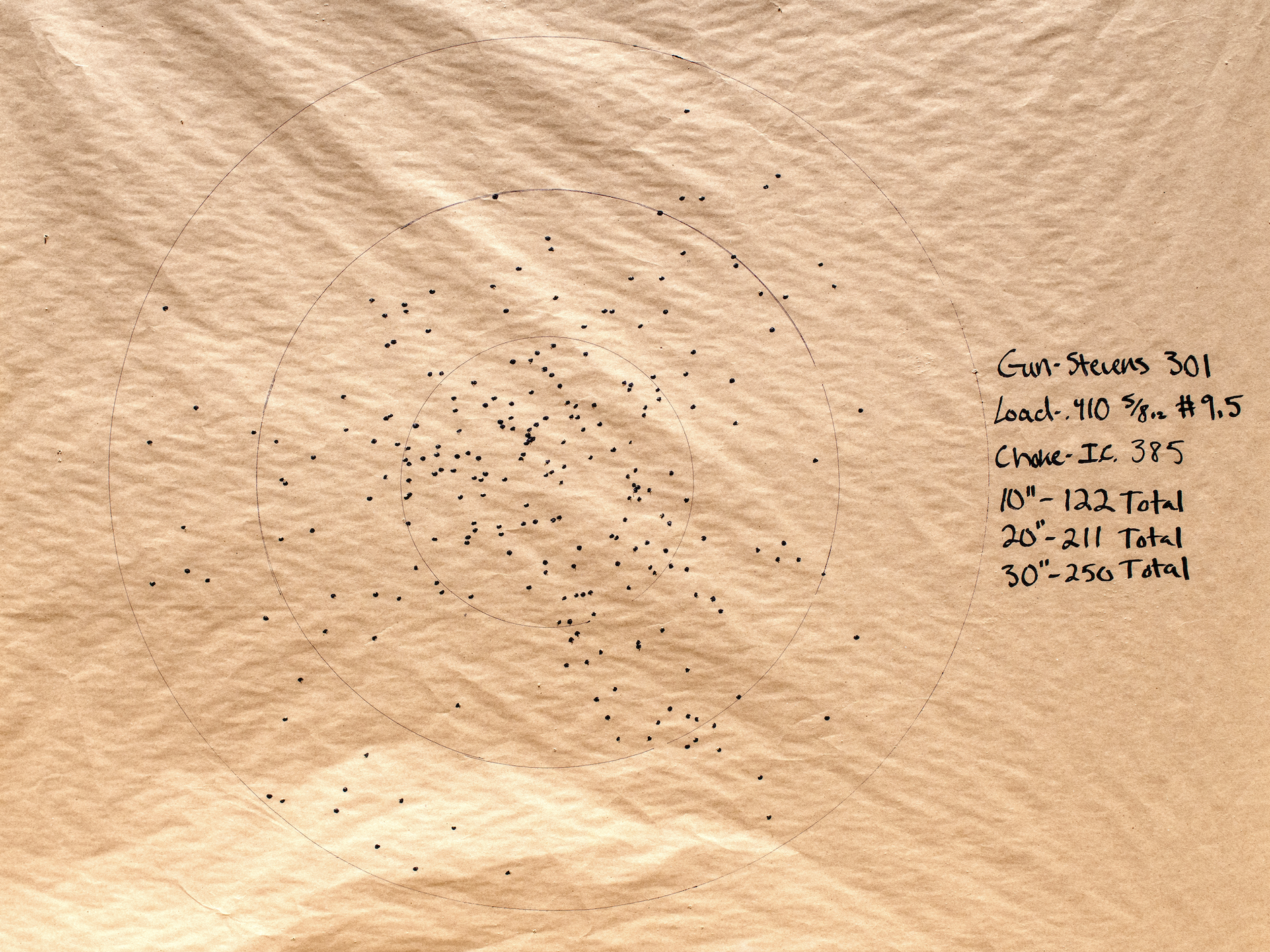
Balancing Bore Diameter with Shot Size
The next variable for ammo makers is to determine what gauges the shotshell will be available in. Smaller gauges carry smaller payloads, but also limit the shot sizes that can be used due to bore diameter. When too large of a pellet is used in a smaller bore, an effect known as “bridging” can take place where two or more pellets become interlocked as they travel down the barrel. When this happens with pellets as hard as or harder than the steel barrel (steel shot, TSS, and almost all tungsten shot alloys), it can damage the gun or choke tube. For shot softer than steel, such as lead or bismuth, the lead can deform or the bismuth can fragment, creating inconsistent patterns. To keep TSS loads safe, BB is the largest shot size used in 10 and 12 gauges with No. 2s in 16 and 20 gauges, and 4s in 28-gauge. In the .410-bore, it’s difficult to deliver a viable payload with anything larger than 7½s. But if you perfectly stack them on top of each other so bridging can’t occur, larger pellet sizes could be used in the .410. The key takeaway? Balancing bore diameter with shot size and available payloads creates the basis for the development of a viable TSS shotshell.
Which Shotguns Can Be Used with TSS?
Since TSS is such a hard pellet, it cannot be shot through Damascus steel barrels, or older guns not manufactured with modern low carbon steel (only bismuth and Kent Tungsten-Matrix are safe for such smoothbores). While many guns from the 1940s on were built with this type of steel, they are not marked for steel shot because lead was still legal. It remained the dominant pellet material due to density, cost, and availability, and there was no need to mark the barrel for steel use. Most firearms produced after the lead ban are marked for steel use or “proof.” However, many guns made prior to that era can safely shoot steel and TSS.
With any firearm, it is critical to assess the condition, maximum payload it can handle, and its constructed materials to determine if it is viable for use with TSS. A prime example is the original Browning Auto-5 and whether it has a Belgian- or Japanese-made barrel. The latter was made of a stronger steel alloy capable of handling harder shot material. As a precautionary measure, it is best for older firearms to be inspected and evaluated by your local gunsmith prior to use.
In addition to assessing older guns, modern day firearm production is taken into account based on gun tolerances, as well as the type of action used (single shot, break-action, pump, or semi-auto). There are numerous firearms manufacturers that build shotguns. Each one has its own design and specifications, so when ammo makers are mass producing a shotgun shell, we must ensure that it will cycle through as many of these guns as possible. For example, the company I help build TSS shotshells for, Apex Ammunition, predominately roll crimps their rounds for a custom shell length, because of that, we need to assess whether the shell length of an expended hull will reliably eject from today’s semi-autos.
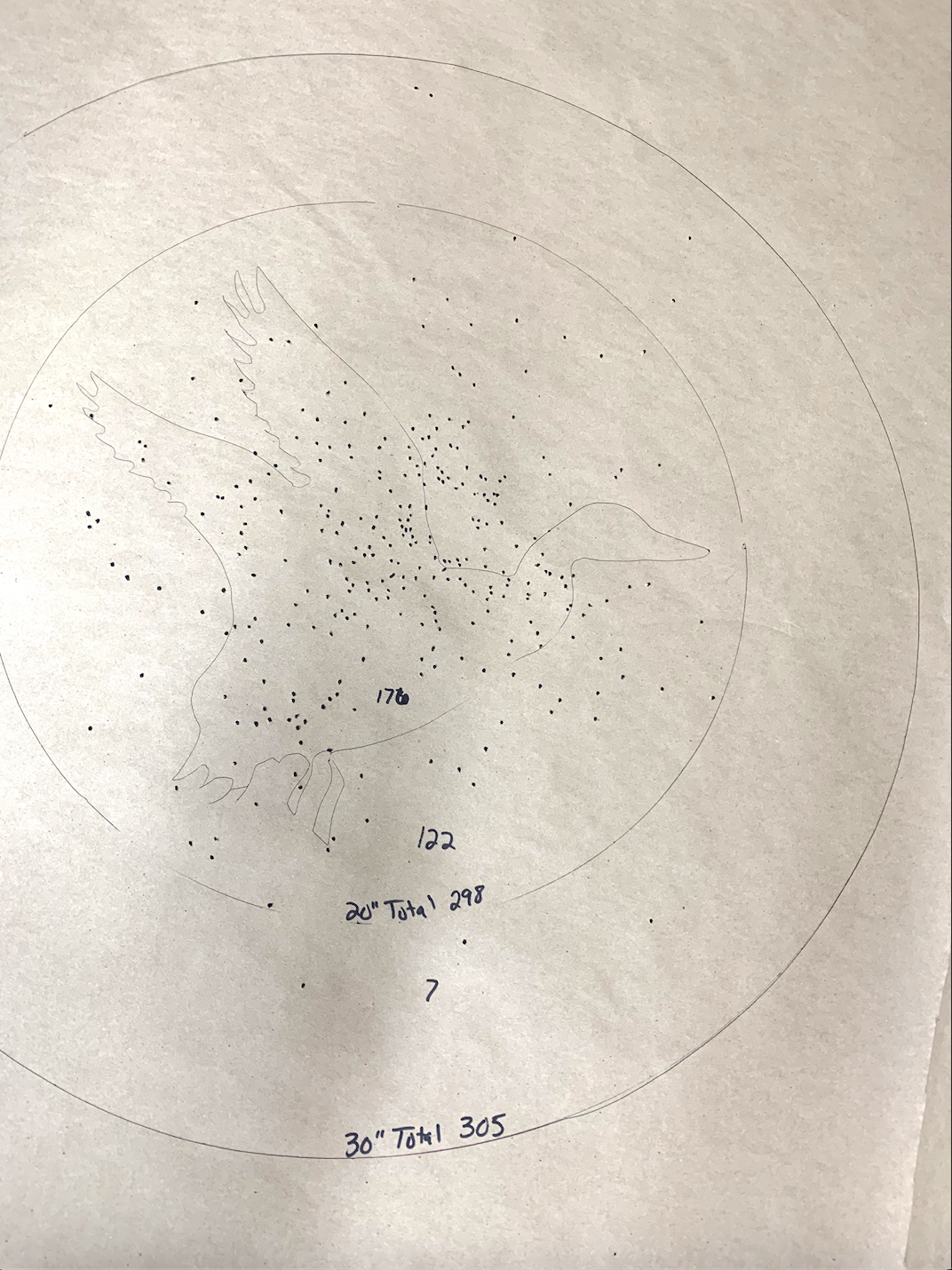
Balancing Payload Size with Smaller Pellets
The core density of TSS can energize smaller bore guns such as the 20, 28, and .410, but there are limitations to payload weight and shot size. Smaller TSS pellets could be packed into a 3-ounce-plus load in a 12-gauge or over 2 ounces in the 20. But it would result in a slowed muzzle velocity (between 700 and 900 fps) and could ultimately damage internal metal components of the gun, like the recoil spring and the bolt, because guns are not designed to handle the high chamber pressures that would be created by firing such heavy payloads. Larger shot sizes in smaller bores cannot achieve the same charge weight because the pellets are so big. That creates more space between pellets, so the overall pellet count suffers as well.
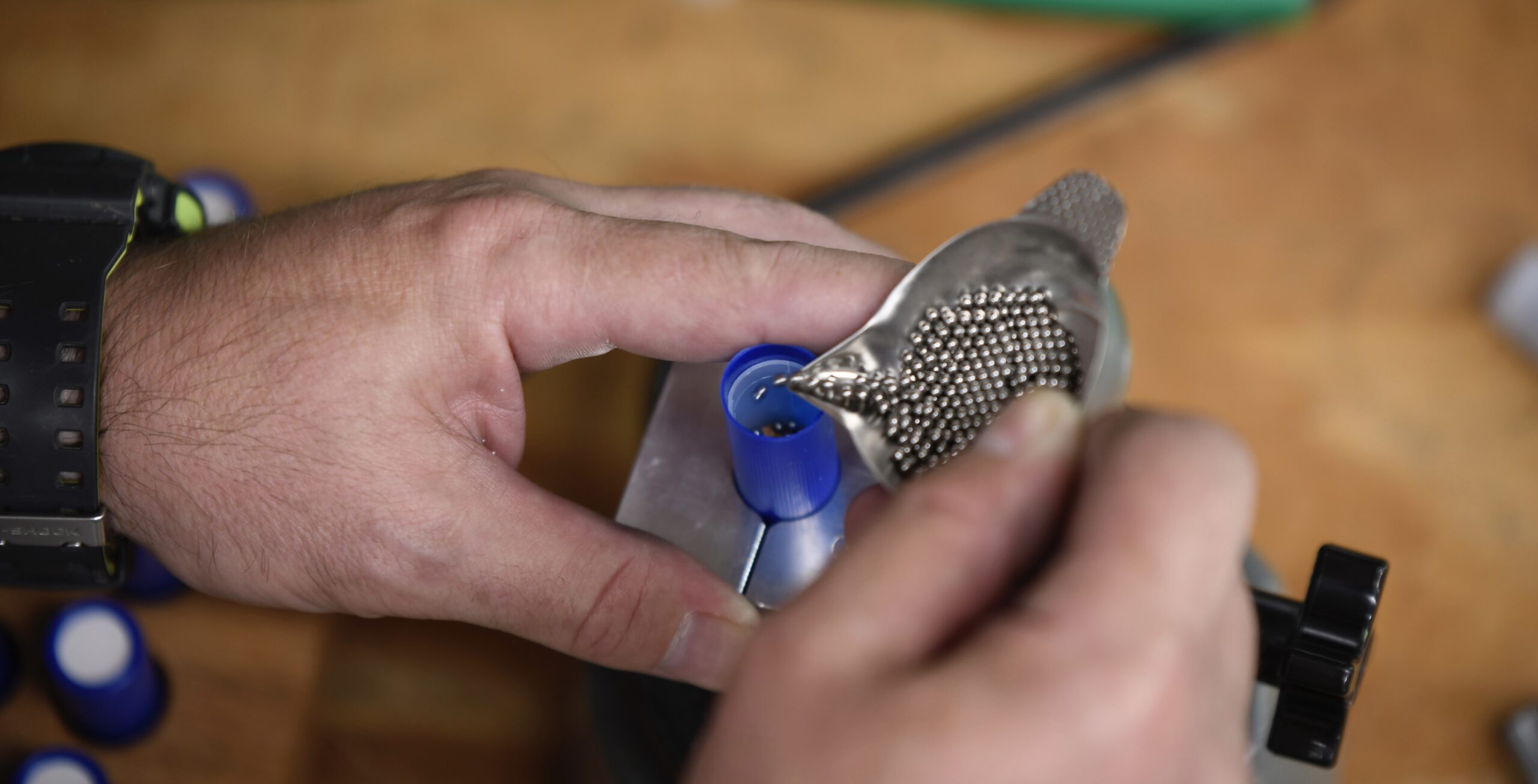
Weighing the Payload Makes TSS More Effective
With smaller TSS pellets, such as 7½s, 8s, 9s, and 10s, ammo makers have to be more precise in their measurements due to pellet settlement. Pellet settling creates a potential for more voids between pellets. The voids can throw off your shot charge, creating a heavier payload, which could exceed SAAMI pressure standards, degrading patterns and potentially damaging your gun. There is no more accurate method to loading shot charges than a scale. Most modern commercial loading is done by volumetric measurement using a pneumatic in-line loader. However, small TSS pellets can settle differently (so can steel, lead, and bismuth) under the volume loading method, potentially resulting in inconsistent shot charges. The weight-based method offers a degree of accuracy within plus or minus one pellet every time.
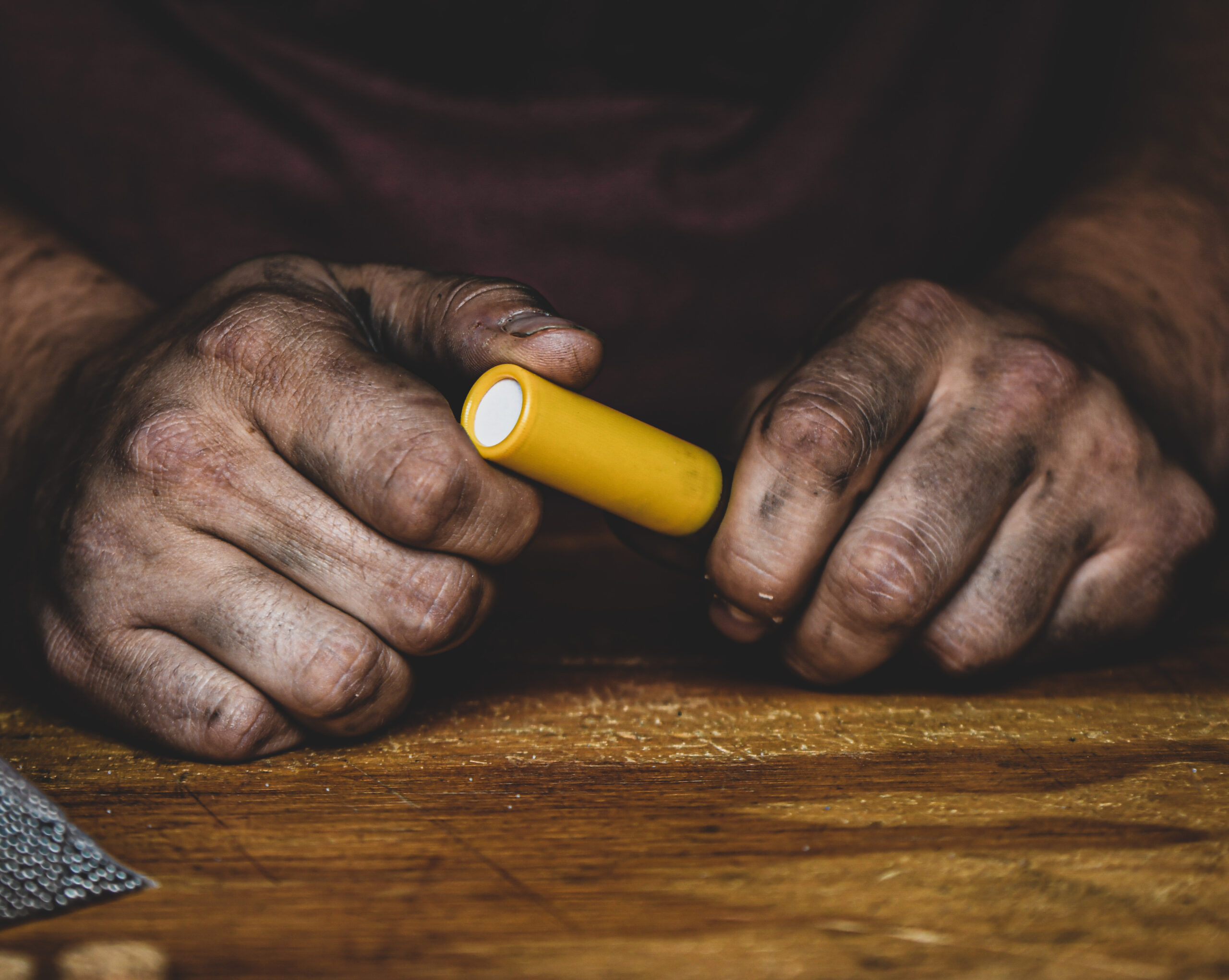
How TSS Shotshells Are Manufactured
Roll crimping TSS shotshells allows for a custom tailoring of the shell length to the payload. Fold crimping reduces the need for an overshot card (placed on top of the shot charge before roll crimping) but needs an exact amount of components inside the shell to crimp it properly. You also must consider crimp depth. If you crimp the shell too deeply, it can cause the chamber pressure to increase because the charge must push open extra plastic. Using a hand-trimmed hull allows for a smooth roll crimp and custom length to ensure proper cycling in semi-autos and pumps. It also better protects stray pellets from escaping the wad and contacting the barrel during the firing process.
Since TSS is the hardest pellet material in shotshells, the barrel and choke need protection from it to prevent scoring and damage, just as it does with steel shot. To accomplish that, a high-grade wad must be used. It can prevent the pellet from contacting the barrel, and should be flexible enough to absorb the impact of the pellets striking the wall of the wad so they don’t penetrate it. The wad also must create an airtight pressure seal inside the barrel to achieve the proper velocity. The tradeoff is that these wads are much thicker and heavier than the ones used by softer metals like lead and bismuth. TSS wads create higher chamber pressures because there is more friction between wad and barrel. Because the wads are also heavier, TSS shells must either have reduced payloads, velocities, or alternative powders to control the burn rate.
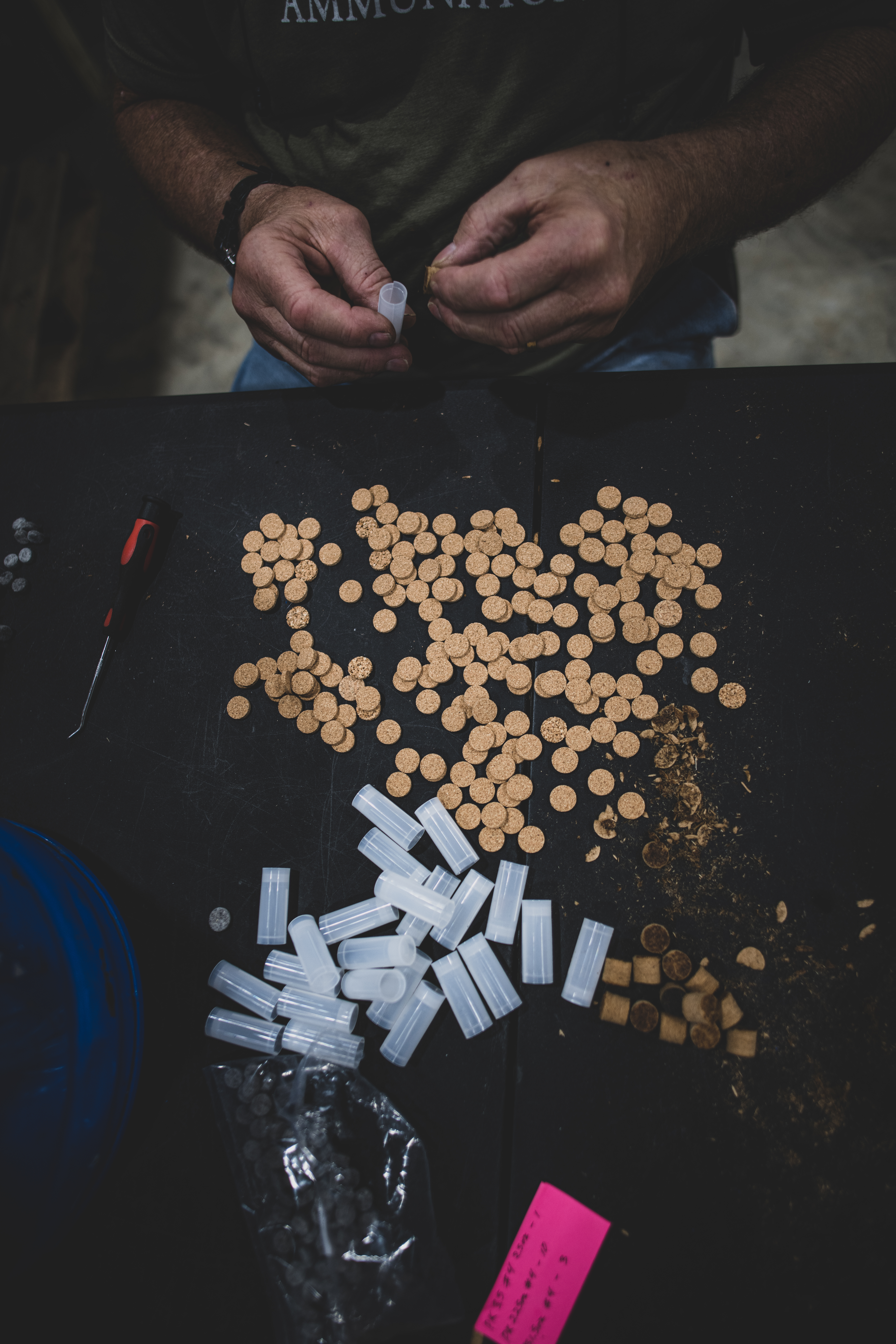
Why Some TSS Loads Need a Polymer Buffer
Small TSS pellets — 7s to 10s — need to be buffered to perform properly. TSS is hard, so unlike soft lead shot, it won’t absorb the energy of another pellet as the payload travels down the bore of a shotgun and out the muzzle. Rather, the pellets bounce off one another. Imagine throwing a handful of bouncy balls down a hallway — that’s what unbuffered TSS looks like exiting the muzzle of your shotgun. Larger TSS shot does not need a buffering agent because it is so heavy.
Controlling the Burn Rate of TSS
The powder, or propellant, is another key component in the design of TSS. Shotshell powders are primarily small flakes or balls, they are not extruded like rifle powders. How fast powder burns affects chamber pressure and shotshell velocity. There are two types of powder: single base (which contains nitrocellulose) and double base (nitrocellulose and nitroglycerine). Most modern shotshells use double based powders, which are either ball or flake style powders that increase energy. The ratios of these chemicals allow the powder to be tailored to a specific burn rate. The size of the granules, and their relative surface area affect the burn rate as well, creating a controlled explosion to ensure consistency with each ignition. The result is a payload, shot type, internal components, and burn rate that come together to create a viable velocity (1,050 to 1,500 fps for TSS, depending on what kind of game you’re hunting) while also balancing chamber pressures (roughly 10,500 to 14,000 psi) for a safe and effective round. Too hot of a powder burns too quickly and creates excessive chamber pressure; too slow and the desired velocity cannot be achieved.
Primers all typically follow the same design but ignite a flame at varied temperatures. Waterfowl loads use a hotter primer because they are often shot in cold environments and must burn faster to increase velocity for leading moving targets. Cooler primers are used for turkey loads due to warmer spring temperatures, and for a slower burn because the payload is heavier (up to 2½ ounces). You also don’t need as much velocity because you’re aiming at a longbeard, not leading a mallard.
Balancing primer ignition temperature affects both how the propellent is ignited and the rate at which it burns. That can drastically affect chamber pressures by thousands of psi. The hull and base wad design can also influence burn rates, but it’s minimal. High brass (16mm or larger) bases are typically paired with magnum loads due to the powder charge they create.
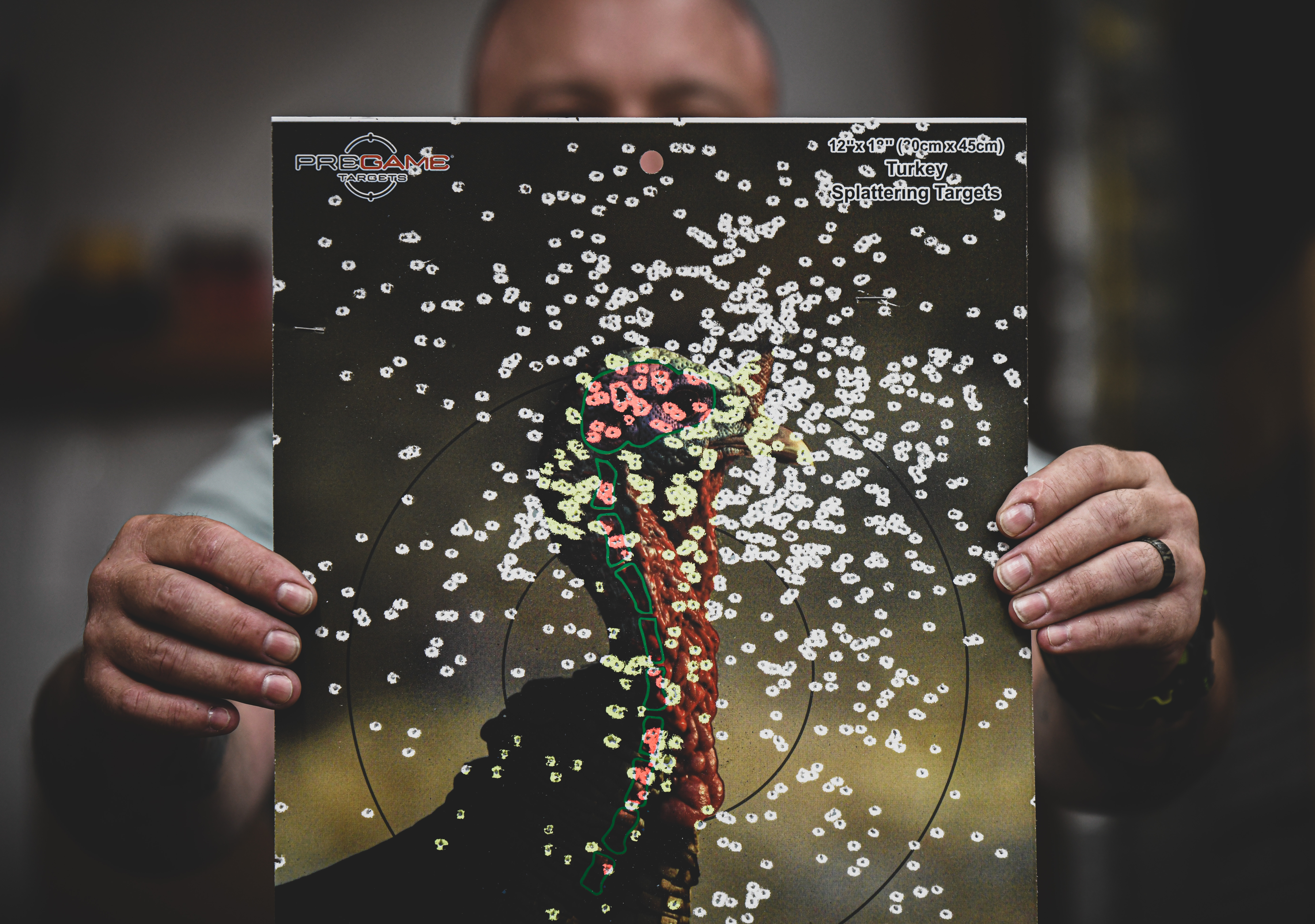
How TSS Loads Are Tested
Creating any product requires thorough testing. This is especially true of shotgun shells. Once a shell is created, it undergoes a series of evaluations to make sure it’s 100 percent safe and consistently performs to the desired level. One way it is safety tested is by employing an independent third-party evaluator to measure chamber pressures and velocities (there are professional companies that conduct these tests). Chamber pressures can be measured using a piezoelectric gauge — which uses a crystal to emit an electrical charge — drilled into the side of a barrel and mounted flush with the barrel wall. A series of 10 shotshells are fired to prove the average chamber pressure does not exceed the SAAMI standards and verifies the velocity falls within a safe range for the gauge. Any time several materials change in components, this process is redone to ensure there are no variances in performance and quality. Relying on an outside party to verify the data adds another layer of safety testing. It also ensures the shotshell’s results are consistent in different locations and shooting environments.
After the shotshell is developed and tested, it’s patterned. Testers pattern shells from a bench, shooting a stagnant target at various distances from 20 to 50 yards with a variety of different shotgun and choke combinations. The goal is to produce a pattern that drops no more than 10 percent every 10 yards from 40 to 70 yards. They’re also verifying that as each pattern begins to open, it holds a uniform two-dimensional dispersal. If the pattern doesn’t meet those standards, engineers go back to the drawing board.
Read Next: Best Shotguns of 2023
If it passes, it’s on to the penetration test. This is conducted using an FBI-grade ballistics gel block that models tissue damage of animals as close as possible (there is no substitute for shooting wild game). The shotshell is fired into a block at various distances to gauge wound channel sizing and penetration compared to its tested velocity. With TSS, especially in the larger shot sizes, you can achieve anywhere from 3 to 6 inches of gel penetration or more.
Once all the development and testing are complete in the lab, it’s time to take it to the field and assess performance under hunting conditions. No product is complete without rigorous field testing in the conditions in which it will be relied upon. As mentioned earlier, the environmental factors can play a substantial role, especially with the selection of hotter or cooler burning powders and outdoor temperatures. Most slow burning powders used in heavy magnum turkey loads do not operate well under extremely cold temperatures (this is subjective based on the primer and powder of the shotshell). For waterfowl, a hotter burning powder is used with a smaller payload to combat cold.
Store Your TSS Loads for Optimal Performance
If it’s going to be extremely cold at night, it’s always wise to bring your shotshells inside if you have the option. That helps protect the performance of your TSS. At Apex, we run a frozen load test, placing rounds in the freezer overnight and firing them to ensure the primers ignite. Loads are also distributed to select hunters for in-the-field testing prior to release. Several personnel in varying climates and locations will put them to the test in the most extreme environments. Afterward, feedback is incorporated from the team and final adjustments are made before the first pallet is shipped.
